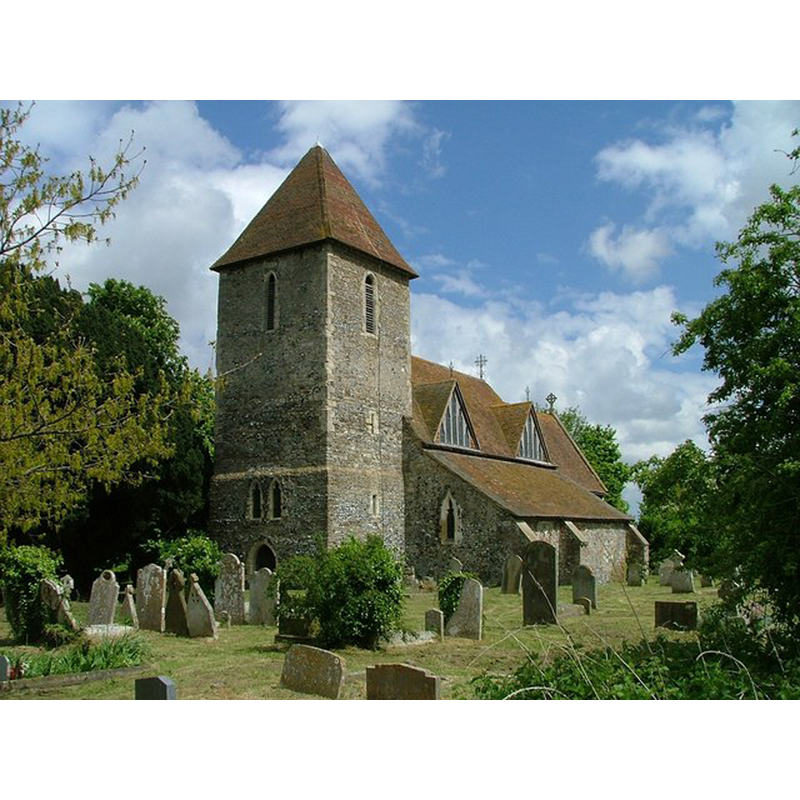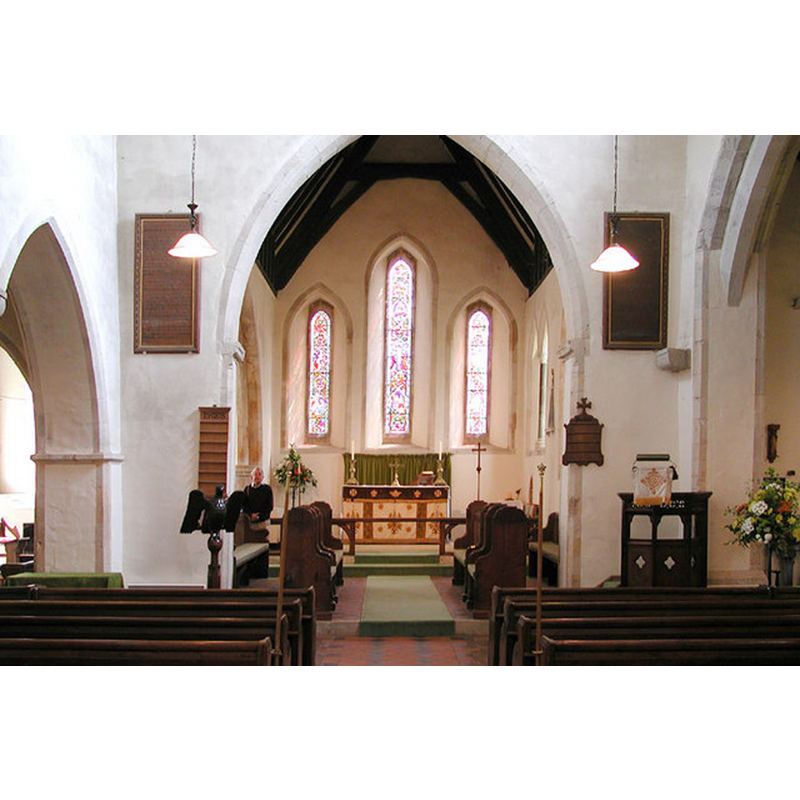Preston nr. Canterbury / Preostatune / Prestetun / Prestetune / Preston-next-Wingham / Preston Street

Image copyright © Paul Hensman, 2005
CC-BY-SA-3.0
Results: 3 records
information
view of church exterior - southwest view
Scene Description: Photo caption: "Note unusual dormer windows probably put in to better illuminate the interior. Records from 1558 but church noted in Domesday Book."
Copyright Statement: Image copyright © Paul Hensman, 2005
Image Source: digital photograph taken 9 May 2005 by Paul Hensman [www.geograph.org.uk/photo/467908] [accessed 18 July 2014]
Copyright Instructions: CC-BY-SA-3.0
INFORMATION
FontID: 06922PRE
Object Type: Baptismal Font1
Church/Chapel: Parish Church of St. Mildred
Church Patron Saints: St. Mildrith [aka Mildred, Mildþrȳð, Mildryth, Mildthryth]
Church Location: Court Lane, Preston, Kent, CT3 1DJ
Country Name: England
Location: Kent, South East
Directions to Site: Located 8-10 km ENE of Canterbury, accessible from Wingham
Ecclesiastic Region: Diocese of Canterbury
Historical Region: [area of Eastry]
Font Location in Church: Inside the church
Century and Period: 13th century, Early English
Font Notes:
Click to view
There is an entry for this (?) Preston [variant spelling] in the Domesday survey [http://domesdaymap.co.uk/place/TR2460/preston/] [accessed 18 July 2014], showing lordship and tenancy in both 1066 and 1086 under the Abbey of St. Augustine, Canterbury [NB: Vitalis appears as co-lord in 1086]; although the total population is categorised as 'very large', with 59 households, there is no mention of either church or cleric in it [cf. infra]. Hasted (vol. 9, 1800) notes: "P[reston is] the next parish westward from Elmstone. It is written in Domesday, Prestetune, and is usually called Preston near Wingham, and in several deeds is stiled East Preston, to distinguish it from another parish of the same name near Faversham. [...] T[he manor of Preston] was part of the antient possessions of the abbot and convent of St. Augustine, to the chamberlain of which monastery it was, together with the hundred, allotted by them, and it is thus entered, under the general title of the lands of that abbey, in the survey of Domesday: 'In Prestetun hundred, the abbot himself holds Prestetune. It was taxed at five sulings. The arable land is eight carucates. In demesne there are two carucates, and twenty five villeins, with seventeen borderers having nine carucates. There is a very small wood. Of this manor Vitalis holds one suling and half a yoke, and there he has in demesne two carucates, and seventeen borderers with half a carucate. The whole manor in the time of king Edward the Confessor was worth ten pounds, when be received it six pounds. What the abbot has is worth fourteen pounds. What Vitalis has is worth one hundred shillings.'" [cf. supra]. The font is not mentioned in Glynne's entry for this church (1877). Listed in Cox & Harvey (1907) as a baptismal font of the Early English period. The 'Brief History' by John Rignall, [undated -- cf. Images area] posted in this church, claims that the church "was probably built on Saxon Foundations. Saxon masonry may be seen in the church tower [...] The major part of the church dates from the 13th century". There is no mention of a font in the English Heritage entry for this church [Listing NGR: TR2468360650]
COORDINATES
Church Latitude & Longitude Decimal: 51.29857, 1.217413
Church Latitude & Longitude DMS: 51° 17′ 54.85″ N, 1° 13′ 02.69″ E
UTM: 31U 375725 5684537
REFERENCES
Cox, John Charles, English Church Furniture, New York: E.P. Dutton & Co., 1907
Spurling, Cuthbert Terence, Historical notes: St. Mildred's, Preston by Wingham, Canterbury: [The Author], 1967
![brief history of the church posted locally [cf. FontNotes]](/static-50478a99ec6f36a15d6234548c59f63da52304e5/compressed/1140718031_compressed.png)
